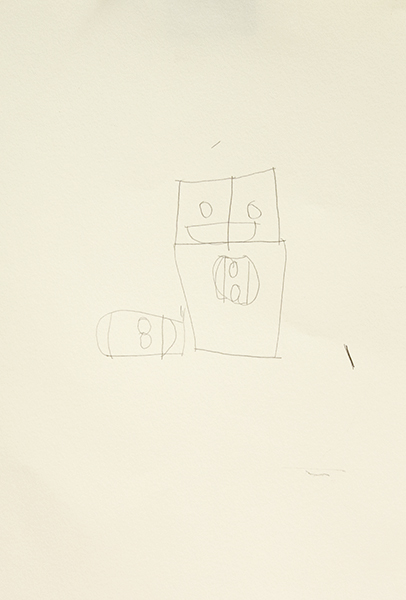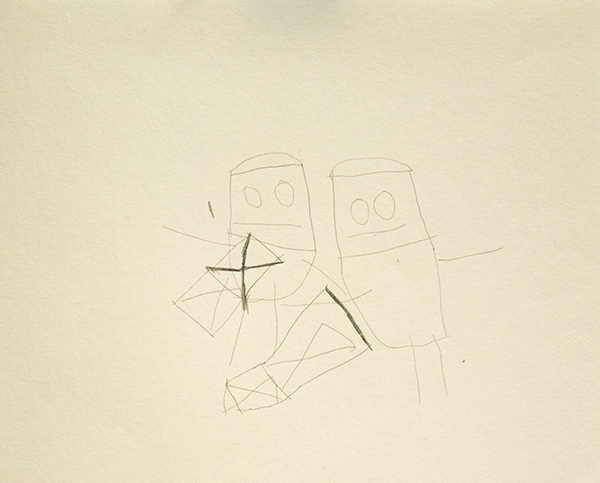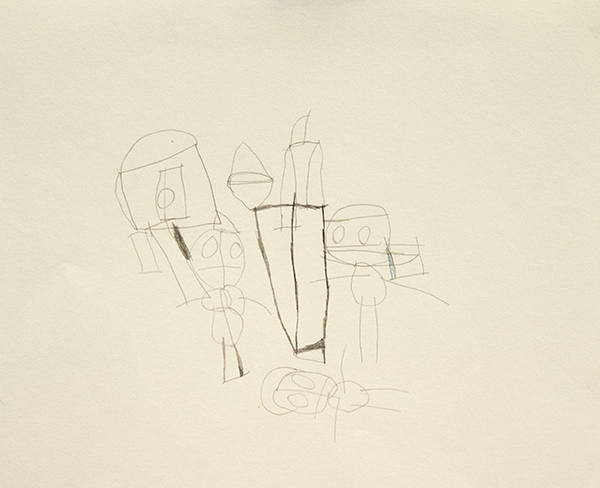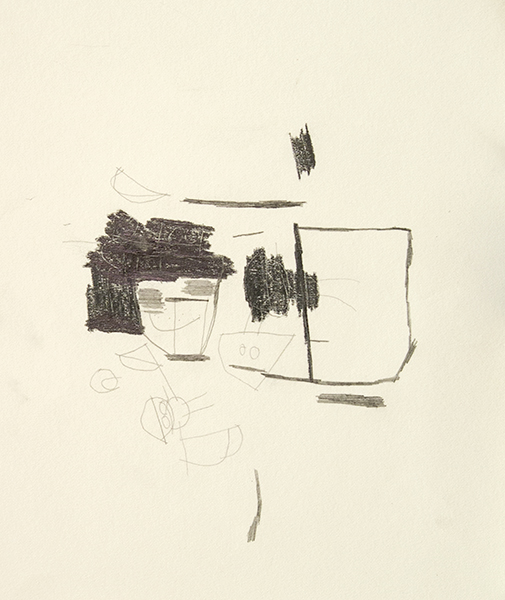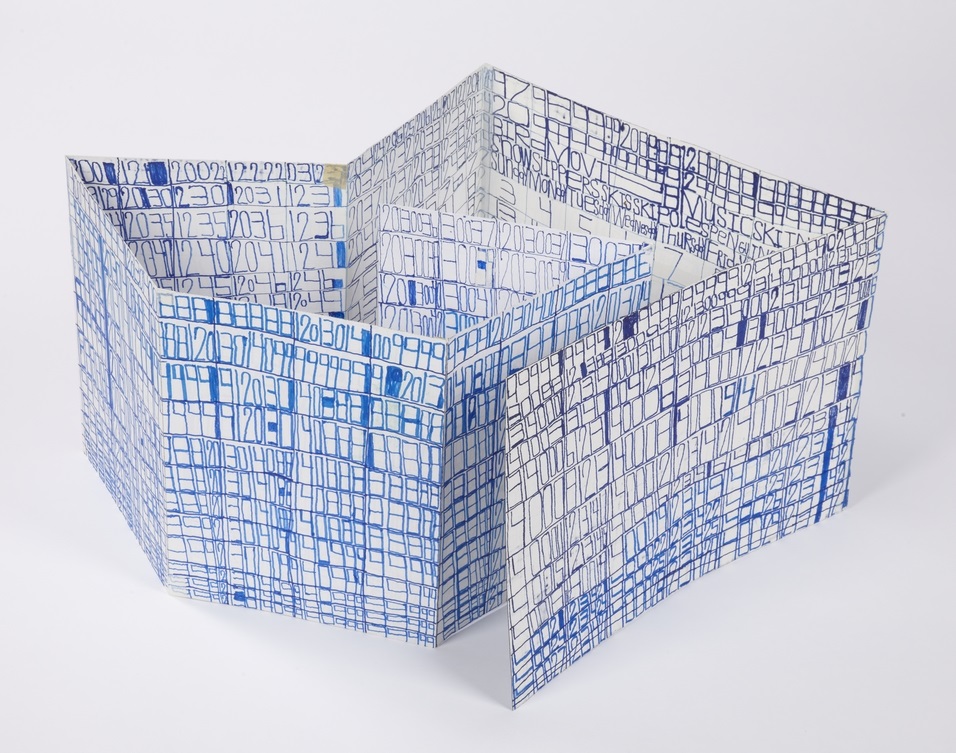Art Project Australia’s Julian Martin at Fleisher/Ollman
At the 24th annual Outsider Art Fair in New York, it was clear that there has been a profound shift. Superficially, the aesthetics are far from the folk art antique shop feel of the past, having assimilated to a presentation more typical of the mainstream - a change generally attributed to one of field’s most successful champions and current fair organizer, Andrew Edlin. On a deeper level, the definition of “outsider” is flexed to a degree that's able to contain a broad spectrum of idiosyncratic works - from the visionary scarecrows of the late Memphis-based artist Hawkins Bolden, to Marlon Mullen’s lush abstractions, to an installation of 3D printed sculptures designed by 65 unconnected collaborators (presented as the work of a manufacturing company, Babel curated by Leah Gordon). Abandoning category without losing identity, the context of this forum has evolved rapidly over the past few years.
In a review of the fair for Design Observer, John Foster recalls that at the inception of the genre, early outsider art dealer Sidney Janis introduced the concept that “serious art could be made by everyday people”, a notion that's difficult to sympathize with today (if artists aren't “everyday people” then what are they?). This train of thought still seems to have some novelty for some 74 years later, as illustrated by Barbara Hoffman’s odd New York Post headline “The artists at this amazing fair are prisoners, janitors, and mental patients”. Ultimately, Edlin has allowed the fair to begin to merge seamlessly with the mainstream by expanding to include a flexible set of principles rather than depending on this particular kind of romantic narrative structure. It’s no longer necessary that the artists work in isolation or live obscure, misunderstood lives.
Rather, it’s a space for excellent creative endeavors that are genuine and created for their own sake, or for a context not ordinarily included in the art world. The most essential principle underlying this movement is that the institution of the market isn’t what engenders great work. In a climate where Laura Poitras (a filmmaker and journalist with no prior fine art experience) has a significant exhibition opening today at the Whitney, the particular terms and intent with which the OAF brings divergent, highly original perspectives to the art world maintains a distinct and important purpose.
The beauty of this more elastic definition is its efficacy both presently and retroactively, indicating that this isn’t so much a shift in paradigm as a greater understanding of why these works have been so compelling all along.
Hawkins Bolden at Shrine
As usual, titans of the self-taught canon were featured extensively throughout the fair: Henry Darger, Joseph Yoakum, Adolf Wolfli, Jesse Howard, Bill Traylor, Thornton Dial, Minnie Evans, Martin Ramirez, Gayleen Aiken, Frank Jones, Royal Robertson, and James Castle, etc. These masters (the ones who have inspired so many to work in this field) continue to be represented by fantastic works, not due to a traditional romantic narrative, but because of genuine, sophisticated, and highly original visions, as evidenced by their conceptual harmony with work by contemporary “outsiders”.
The fair's strongest and most relevant exhibitions, however, were contemporary works by artists who maintain studio practices at progressive art studios - a dynamic collection of installations that were, in sum, a tour de force eliminating any question about their importance to this emerging sub-market, and potential to sustain, develop, and gain momentum.
Marlon Mullen at JTT/Adams and Ollman
Marlon Mullen, NEWS (P0329), acrylic on canvas, 24" x 36"
The fair’s most important moment, and starkest example of the flexed "outsider" categorization, was the joint exhibition of NIAD’s Marlon Mullen by New York’s JTT Gallery and Portland’s Adams and Ollman - a solo exhibition of reductive acrylic paintings, with content explicitly referencing the contemporary mainstream. The narrative justification for its inclusion would be the assumption that these abstractions are defined by an unusual way of thinking and seeing, as opposed to a neurotypical artist’s contrived deconstruction of found imagery. Whether Mullen is engaging in abstraction in the traditional sense, creating representationally from his own perspective, or whether there is no meaningful difference between representation and abstraction in his experience is impossible to determine. Ultimately, their genesis becomes irrelevant because the elusive power of the imagery is an amalgamation of the inherently expressive nature of the work's formal elements, which isn’t dependent on a mutually understood way of seeing. The real triumph and importance of Mullen’s work lies in the revelation that their mysterious conceptual origin only causes their success to be more fascinating, and that they’re pushed to a degree of technical sophistication that’s unmistakably impactful. His paintings are paradoxically thoughtful and casual, as awkward as they are bold, as messy as they are delicate. These pieces embody a deeply genuine and intuitive quality that coexists with a strength defined by specificity and fine tuning.
Helen Rae at The Good Luck Gallery
Helen Rae, July 1, 2015, colored pencil and graphite on paper, 24" x 18"
The fair’s most generous moment was The Good Luck Gallery’s installation of stunning Helen Rae drawings - surfaces saturated with vigorous mark-making culminate in robust, stylized worlds rendered in graphite and colored pencil. Rae’s counter-intuitive re-imagining of the boundaries between abstraction and representation are thrillingly confounding. Strong graphic or patterned passages have an inexplicable sense of depth and form, which transition into fields scattered with spare details, achieving an almost photographic quality - all of which emerges from a surface that (when examined closely) possesses a roughly inscribed physicality. The continuous stream of excellent new drawings replacing sold work served as a testament to the promise of this prolific septuagenarian as an emerging phenomenon to watch.
Andrew Hostick at Morgan Lehman
Photos do little to capture the true nature of Andrew Hostick's drawings at Morgan Lehman Gallery. Not evident above is the experience of approaching this simple red, blue, and brown figure eight to discover that it’s surrounded by an opaque, shimmering field of marks in white colored pencil, worked hard into the mat board surface. The mystery of choosing to color a white surface white, is in its own way explained and not compounded by its eventual effect: fantastic moments of wonder in a distinct and familiar space. The curious effect of this subtlety achieved in such a laborious manner lays a foundation for the elusive mood that runs throughout all of Hostick’s works. He seems to search for, and with great success, achieve abstractions that aren’t just poignant in a general sense, but evoke a beautifully bleak, arid quality that seems to romantically belong to Ohio.
Andrew Hostick, Leon Polk Smith: A Constellation with Works on Paper, graphite/colored pencil on mat board,
Kenya Hanley, Family Matters, 2015, Mixed Media on Paper, 17" x 14", image courtesy Land Gallery
Other highlights included the velvety pastel abstractions of Art Project Australia’s Julian Martin at Philadelphia’s Fleisher/Ollman, humorous, pop-culture driven drawings by Kenya Hanley and Michael Pellew at LAND Gallery, Harald Stoffers at Cavin Morris Gallery, Joe Minter and Lonnie Holley at James Fuentes, Evelyn Reyes, Daniel Green, and Camille Halvoet at Creativity Explored, Terri Bowden, Susan Janow, and William Scott at Creative Growth, Walter Mika and Victor Critescu at Pure Vision, and an impressive quantity of work by artists at Japanese studios. Although only 4 progressive art studios exhibited independently at this year’s fair, their respective artists were prominently featured in a quarter of the exhibitions, including those of the most prominent dealers.
Henry Darger and Judith Scott at Andrew Edlin
Susan Janow, Untitled, colored pencil and micron on paper
Harald Stoffers, Brief 164, March 10th, 2012, ink on paper, 39.25" x 27.5", image courtesy Cavin Morris Gallery
Lonnie Holley at James Fuentes, NY
One of the most important insights from this year's Outsider Art Fair is that the progressive art studio can no longer strive to position itself as a neutral, invisible player between self-taught artists and an outsider art gallery. Undeniably, progressive art studios are poised to be a truly important movement, but, reflecting on this changing landscape it’s important that they critically evaluate their role in presenting work to the market. Despite their prevalence at the fair, gallerists had no reservations about expressing that they’ve been forced to stop representing artists they believe in due to studios' failures, ranging from unethical behavior (such as gifting works to program board members) to providing intrusive facilitation to simply being disorganized. The process of translation from outsider to the mainstream fine art market is delicate, and is something outsider art dealers are just now learning to do effectively; they’ve been an asset to studios because of their willingness to represent unique artists without ties to the broader art community. As the distinction continues to break down between outsider and insider, however, studios can only continue to be relevant if they’re able to proactively take on the responsibilities of translation and promotion typically provided by gallerists (including handling and documenting artwork properly).
The future of this process is pioneered right now by career paths that resemble the ones profiled above: NIAD, JTT, Adams and Ollman, and Marlon Mullen; Visionaries + Voices, Andrew Hostick, and Morgan Lehman; First Street, Helen Rae, and Good Luck Gallery; and Creative Growth, William Scott, and White Columns. Progressive art studios must believe in and champion each of their great artists with respect for their individual vision, with a focus on developing careers that extend beyond their program of origin.
Mark Hogencamp, Untitled (IMG_2616), Digital C-print, 27" x 36", 2014
In the traditional narrative of outsider art, the career of an artist such as Mark Hogencamp would have ended with the initial discovery of Marwencol. Ideally in the past, he would have been deceased before the work was found and his fixed oeuvre would be intrinsically associated with the story of a strange man working in isolation and obscurity (much like Darger and Ramirez). Mark Hogancamp, however, is no longer obscure or working in isolation. His new work at this year's fair, scenes created using full-sized mannequins, are a clear and exciting new development in his creative process. Hogancamp’s work is not at all diminished by the open involvement of his facilitator and gallery director Eddie Mullins, who we spoke with at One Mile Gallery’s booth. In our conversation with Mullins, his relationship with Hogencamp was remarkably familiar. Marwencol is a project absolutely devised and driven by Hogencamp, but Mullins has no inhibitions about explaining that the use of mannequins began after he provided some for Mark. Mullins plays an instrumental role in how Hogencamp’s vision is ultimately seen as art, but his assistance isn’t mistaken for collaboration (much like the relationships sound engineers and producers have with musicians). In this way, the transparency of this relationship sets an important example for studios to follow.
Recognizing the true nature of the facilitated creative process, including that provided by artist staff in the studio, must be fully open to criticism in order to progress; it’s simply too personal, dynamic, and delicate to be left out of the discussion. The next wave of great artists will come out of progressive art studios that are not only assisting artists to initiate a creative practice, but also provide innovative and ambitious new facilitation methods to further develop dynamic bodies of work.
